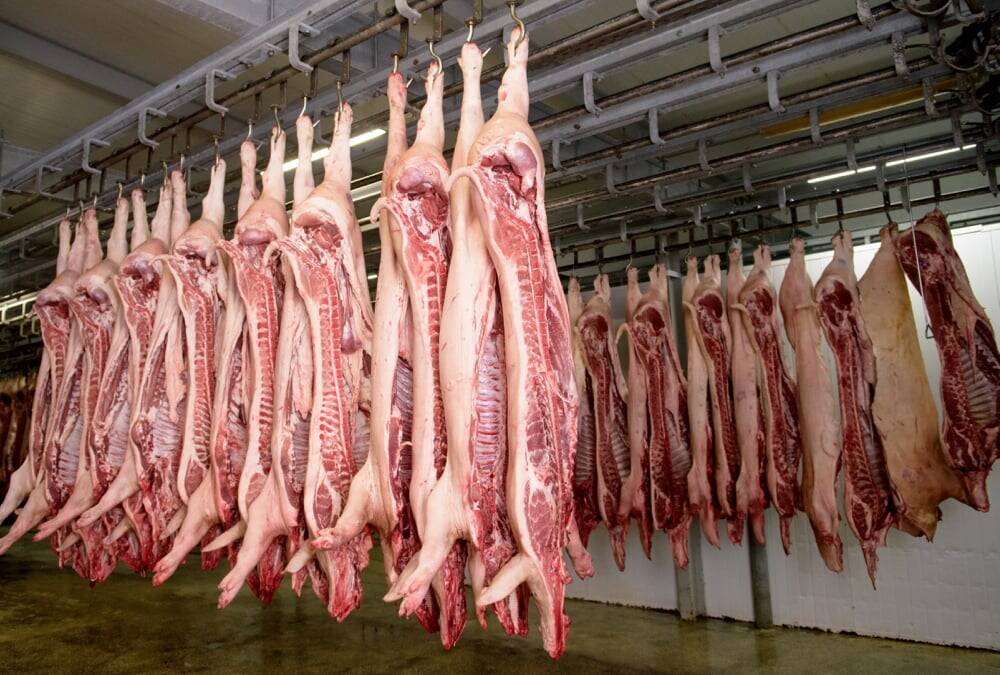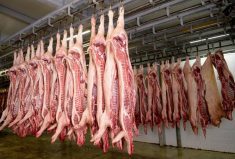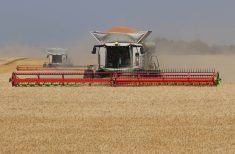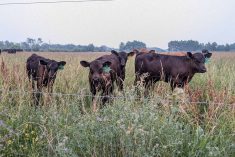Feeder cattle prices in Western Canada were steady with week-ago levels as the market appears to be losing upward momentum. Cattle weighing 500 to 600 pounds were averaging $168 in southern Alberta, which is marginally lower than a week earlier.
Above-normal precipitation throughout the winter will result in stronger demand for grass cattle. Some of these ranchers are starting to step forward, competing with the feedlot buyer. This intense battle has the smaller feedlot operator stepping aside, waiting for a price correction. There is good demand underneath the market, but cattle buyers are cautious at the current price levels.
Read Also

U.S. livestock: Lean hogs tick down on supply numbers, year-end positioning
Chicago | Reuters – Chicago Mercantile Exchange live cattle and lean hog futures fell while feeder cattle futures rose on…
Good quality bred cows are selling for $1,600 and bred heifers are touching the $1,500 level. These prices will likely continue to climb as the industry is at the beginning of the expansionary phase. Many producers remember when $2,000 per cow was not uncommon.
Since September 2010, U.S. cattle exports to Canada have been running above year-ago levels and this will also temper the upside in the feeder market. The stronger Canadian dollar is enhancing demand for U.S. feeder cattle in southern Alberta feedlots. We saw a surge in November of 9,000 head moving north and we could see this activity again in March through April, because the costs per pound gain are more competitive in Alberta relative to the U.S.
Prices for lightweight steers are approximately 40 per cent above year-ago levels while slaughter cattle are up 22 per cent. Retail beef prices are only up 10 per cent for the same timeframe and another 10 per cent increase will significantly slow domestic U.S. beef consumption. This is a major risk over the next six- to eight-month period. The cattle market is functioning to ration demand, which could result larger volatility during March.
— Jerry Klassen is a commodity market analyst in Winnipeg and maintains an interest in the family feedlot in southern Alberta. He writes an in-depth biweekly commentary, Canadian Feedlot and Cattle Market Analysis, for feedlot operators in Canada. He can be reached by email at [email protected] or at 204-287-8268 for questions or comments.















